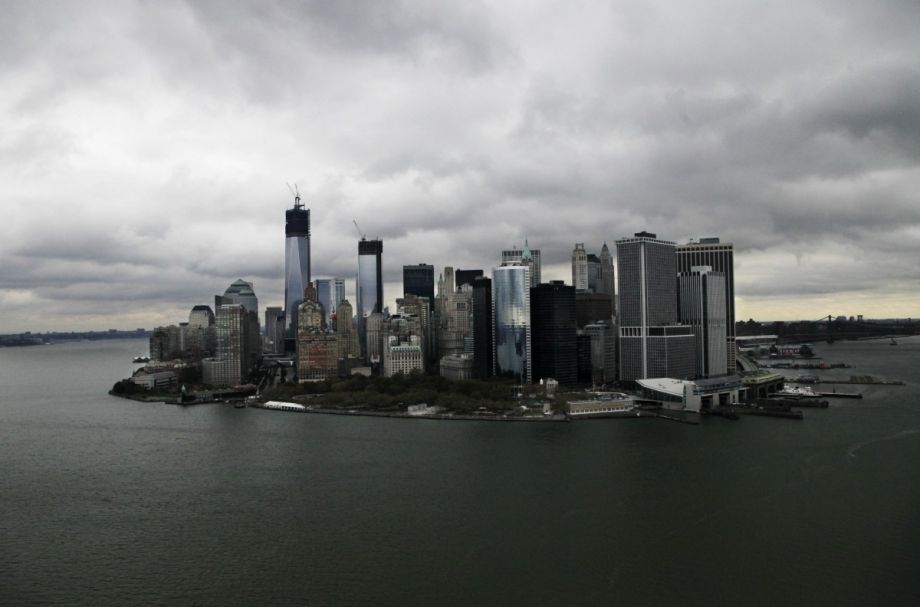After Hurricane Sandy, the consensus in the New York region was that protections against future floods were desperately needed. People came up with all manner of suggestions — from absorbent plugs for subway tunnels and basic building retrofits to seawalls and storm-surge-abating oyster beds.
And then … not much. New York City and the rest of the region appear poised to continue on, for the most part, as if nothing ever happened, likely waiting until the next storm shakes them out of complacency.
But in the meantime, a group of researchers from the Vrije Universiteit in Amsterdam, MIT, Princeton and Wharton have put some numbers to a series of climate protection strategies for the New York and New Jersey areas, pinpointing in an article in the journal Science both the costs and expected benefits of the various infrastructure solutions. What they found was that the viability of the different strategies is dependent on the gravity of climate change in the years to come — the more extreme the weather and polar ice cap melting, the more worthwhile investment becomes.
The solutions examined range from simple building code strategies — elevating and retrofitting existing and new construction — to more elaborate barriers in the region’s bays, including a maximalist approach with a so-called “Outer Harbor Barrier” enclosing the entire New York Bay between Sandy Hook in New Jersey and Rockaway in Queens. The barriers would be designed to withstand storm surges of 25 to 30 feet. (For a point of comparison, Rockaway saw the highest storm surge during Sandy in the immediate area, nearly 9 feet.)

This map shows the maximalist infrastructure solution for climate protection strategies in the New York and New Jersey areas, with sea barriers obviating the need for extensive levees on Staten Island and in southern Brooklyn. (sciencemag.org)
To determine the probability of harm, the researchers “simulated 549 storm surge simulations, varying from extremely low probability events to more frequent storms,” and then “applied flood depth-damage curves to calculate potential damage to buildings and vehicles at the census block level,” along with evaluating potential damage to other categories of structures, like infrastructure.
In New York City alone, they expect annual flood losses of $174 million if no precautionary flood measures are taken, or $2.2 billion over a 100-year period, saying that the damages incurred by Sandy were “very close” to what their model predicts.
When they compared the benefits in terms of avoided damage to the costs — $14.7 billion to $23.8 billion for New York City and New Jersey for the maximalist infrastructure solutions, or $11.6 billion for a hybrid involving less physical infrastructure but combining it with building code upgrades — they found that none of it actually made sense, economically.
If, that is, you assume that the climate won’t change much. Once you assume that climatologists’ predictions, which are becoming increasingly dire, pan out, then the solutions start to make sense.
“All barrier strategies and the hybrid strategy are,” the authors write, “economically attractive if flood risk develops according to a high climate change scenario,” involving “rapid ice melt and significant increase in storm activity.”
The two most worthwhile investments, they find — with benefit-cost ratios of more than two, meaning that the investments will pay off at least twofold — are the one involving the most heavy infrastructure (physical barriers, rather than just hardening of existing coastlines, protecting the Lower New York Bay, and then another sectioning off the East River from Long Island Sound), and the hybrid solution.
The study’s authors admit that there is a fair amount of uncertainty in such benefit-cost analyses, including the discount rate (how much more valuable is one dollar today than one dollar, even adjusted for inflation, in the future?) and a broad range of unknowable future scenarios. But, they caution, “Uncertainty is inherent to such estimations, but it should not be used to justify not doing anything.”
The Works is made possible with the support of the Surdna Foundation.
Stephen J. Smith is a reporter based in New York. He has written about transportation, infrastructure and real estate for a variety of publications including New York Yimby, where he is currently an editor, Next City, City Lab and the New York Observer.

















